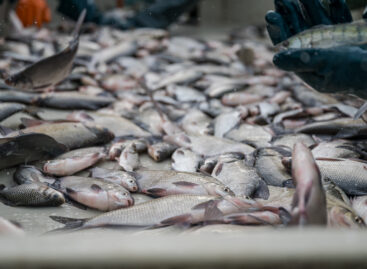Big Brother's cafe watches you eat
$4.5 million Restaurant of the Future is run by scientists of Wageningen University and Research Center, working with Sodexo, an international catering firm, and the Noldus software company, to answer questions from the food industry and behaviorists.
Research on consumer behavior has been
around since marketing began. Cornell University professor Brian
Wansink has published popular works in the United States on how to
fight obesity through food psychology, and runs a lab designed to
look like a kitchen on the Cornell campus. McDonald's has done
confidential studies on its own customers.
But with its spy machines, databases
and battery of analysts, the Wageningen project, with 42 companies
participating, is meant to take the study of eating to a level
approaching rocket science.
Knowing how to subtly guide choices
could have a huge commercial impact. About half of all food consumed
in the United States is outside the home. That figure shoots up to 68
percent in Japan.
Companies are interested, of course,
but so are public facilities. A hospital in Utrecht has asked for a
project on the effects of a better meal or a change of dining
surroundings on the well-being of its patients. Schools want to know
how to deal with young teenagers who throw away home-prepared food
and lunch on potato chips and Coke instead.
The cafeteria is organized in a series
of islands, each with a different food type, in what Koster called a
free-flow system rather than the traditional long line serving
everything. People feel they have a wider selection — and they tend
to spend more money, he said.
The checkout is self-service. Customers
punch in the dishes they chose on the touch screen and pay by card,
ensuring that everyone's eating habits can be tracked and their
responses to changes can be recorded. Flush on the floor at the
checkout is a scale that records the customer's weight.
The lunchroom serves about 200 diners a
day. Some 480 people registered for the project and gave their
written consent to be monitored. Casual visitors are not part of the
experiment.
Discreet ceiling cameras can zoom in on
a face or a plate, or pull back to view a table or broad section of
the lunchroom. They record not only what food you selected, but what
you almost selected and how long you paused before deciding. Facial
recognition software analyzes your level of enjoyment.
In the control room, technicians watch
the action on individual screens and on a large overhead screen
divided into quadrants.
Volunteers are encouraged to sign up by
the cheap prices — it's one of the few places in the country you
can eat a full meal for $6.30.
Researchers are just beginning to
experiment after establishing the clientele's baseline behavior since
the cafeteria opened early this year. But they already are piecing
together anecdotal evidence. Some examples:
Put the same coffee in four mugs of
different colors and ask people which is stronger. Men likely will
point to the brown mug. Women are less likely to be fooled, Koster
said.
For months, he said, customers bought
milk from a vending machine. One day, the label was changed to
indicate the milk was organic — prompting some people to comment
that it tasted funny.
People eat more when food is served on
a big plate, less on a small one. Attitudes change when freshly cut
flowers are on the table.
In a study published in the
September-October issue of the Journal of Nutrition Education and
Behavior, Wageningen doctoral candidate Pascalle Weijzen reported
that people who say they like healthy food often succumb to junk.
Nearly 600 people were asked which snack they would pick among an
apple, banana, a candy bar or a molasses waffle. A week later they
actually were offered the choices — and 27 percent who claimed to
prefer fruit scarfed the candy instead.

Related news
Related news
CDs and DVDs are experiencing a renaissance at Vatera, but second-hand LEGO is the real star of this Christmas
🎧 Hallgasd a cikket: Lejátszás Szünet Folytatás Leállítás Nyelv: Auto…
Read more >NGM and VOSZ cooperation agreement for the security of digital commerce
🎧 Hallgasd a cikket: Lejátszás Szünet Folytatás Leállítás Nyelv: Auto…
Read more >Despite the damage caused by the drought, there will be no shortage of high-quality Hungarian fish
🎧 Hallgasd a cikket: Lejátszás Szünet Folytatás Leállítás Nyelv: Auto…
Read more >



